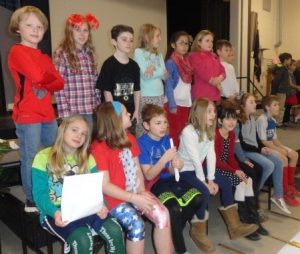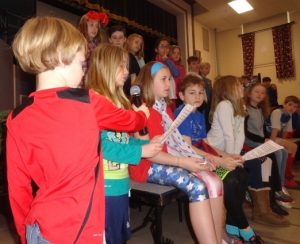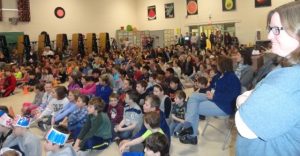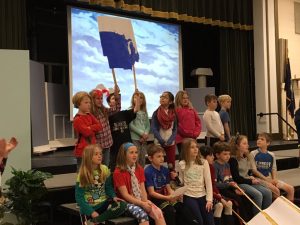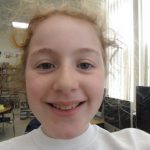 This post is illustrated with photographs taken by Gabby, this week’s class photographer.
This post is illustrated with photographs taken by Gabby, this week’s class photographer.
It’s hard to believe that another school week has come to a close. Here’s what we accomplished.
Science –
 We’ve continued making observations of our seedlings, both in the classroom and in the greenhouse. We’ve seen a lot of changes. And we’ve noticed that seed do not always sprout, nor do seeds of the same variety grow in exactly the same way.
We’ve continued making observations of our seedlings, both in the classroom and in the greenhouse. We’ve seen a lot of changes. And we’ve noticed that seed do not always sprout, nor do seeds of the same variety grow in exactly the same way.
Social Studies –
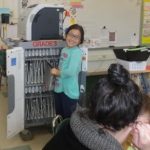 We’ve continued on with our state research. We’ve discovered that books are some of our best resources. If we look at just the pictures in the four books we have about our state, we can infer what is important there by noticing what images are repeated. Almost everyone realizes the need of reading sections and then taking notes about what is important. We’ve got fewer students copying what they read and that’s a great thing.
We’ve continued on with our state research. We’ve discovered that books are some of our best resources. If we look at just the pictures in the four books we have about our state, we can infer what is important there by noticing what images are repeated. Almost everyone realizes the need of reading sections and then taking notes about what is important. We’ve got fewer students copying what they read and that’s a great thing.
In addition to our research, we also completed the image of our state wonder and began the collage of our state hero. These are two of the pieces that will be included on our float for the parade of the states.
And finally in social studies, we put the large 4’x7′ map of the United States up in the hall by the library. This is the one we used at the assembly last week. Each student in grades 3 through 8 has a sticker to place on the map to show the state or national park each shared in their third grade year. It is fun to see the map fill with stars as we “celebrate the states.”
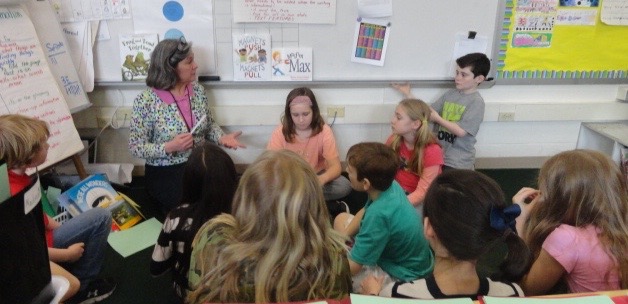
Math –

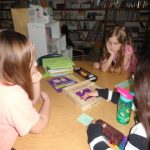
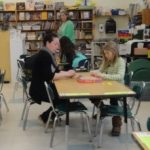 This week we began math with games. These are for fact practice. Some of the kids were having very little time with them when it was the last part of the hour so we switched it up. It’s fun and helpful at the same time.
This week we began math with games. These are for fact practice. Some of the kids were having very little time with them when it was the last part of the hour so we switched it up. It’s fun and helpful at the same time.
We also began to explore fractions. We know that a fraction is a part of a whole. We also know that in math those parts must be equal or “fair shares” as we call them. We’ve continued to explore the idea of equivalence and will expand this idea as we learn more about fractions as well.
Writing –
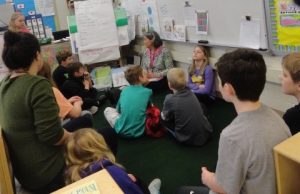 In addition to our state research work, we completed an informational writing assessment. In the first few weeks of school the children wrote an informational piece to be scored on a rubric. And now, we completed another to use as a comparison. Over the course of the next two weeks, I’ll conference with the children showing them their pieces of writing, looking at the goals set in November and helping set up a final goal for the year.
In addition to our state research work, we completed an informational writing assessment. In the first few weeks of school the children wrote an informational piece to be scored on a rubric. And now, we completed another to use as a comparison. Over the course of the next two weeks, I’ll conference with the children showing them their pieces of writing, looking at the goals set in November and helping set up a final goal for the year.
This is an interesting process. The children will be surprised by the changes and growth they see. They don’t feel different, and yet they have accomplished a lot.
Reading –
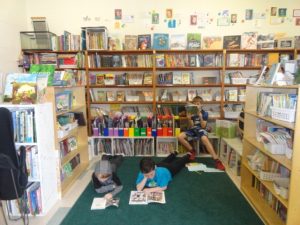 We continue to read poems about seeds, planting and growing together. We alternate between sharing picture books, both fiction and nonfiction, about plants and about the United States each day.
We continue to read poems about seeds, planting and growing together. We alternate between sharing picture books, both fiction and nonfiction, about plants and about the United States each day.
We are about halfway through Wonder. We are learning about events from Jack Will’s perspective right now. You may want to talk to your child about what is happening and how they feel about the characters who are in school with August. They are Julian, Charlotte, Summer and Jack Will.
In addition to the books and poems we share as a class, the children are also reading books of their own choice. Popular in the classroom now are The Olympians – a graphic novel series of Greek Mythology by George O’Connor, the Aldo Zelnik series and The Origami Yoda series. The last According to Humphrey book club finished this week so we’ll be ready for another round of book clubs starting next week. It was a challenge for all the children to keep their commitments of reading the agreed upon chapters and completing their reading record. We are looking forward to meeting these expectations with more ease in this next round of book discussions.
S.E.L.
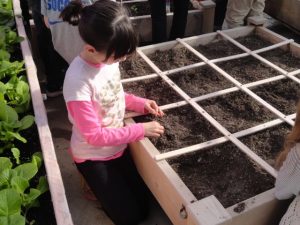 Our challenge as a class is to stay focused. We are working on self-management. Our class talks and chats and gabs all the time. It happens when were at tables doing seatwork. It happens during instruction. It happens ALL the time. It seems that we can’t resist responding a blurted comment. We are all trying to monitor ourselves and find a way that will lead us on to greater success. On Wednesday we managed to write nearly silently for forty minutes. The results of that focused time were remarkable. We are looking forward to more of this.
Our challenge as a class is to stay focused. We are working on self-management. Our class talks and chats and gabs all the time. It happens when were at tables doing seatwork. It happens during instruction. It happens ALL the time. It seems that we can’t resist responding a blurted comment. We are all trying to monitor ourselves and find a way that will lead us on to greater success. On Wednesday we managed to write nearly silently for forty minutes. The results of that focused time were remarkable. We are looking forward to more of this.
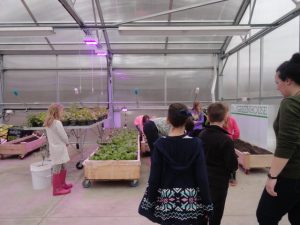
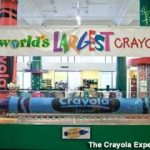 Pennsylvania is the home of many things. It became a state in 1787, but before that, it published the first magazine in America, American Magazine in 1741. Now you can travel to Easton, PA and see the world’s largest crayon while you learn all about how crayons are made at the Crayola Factory that was founded in 1885.
Pennsylvania is the home of many things. It became a state in 1787, but before that, it published the first magazine in America, American Magazine in 1741. Now you can travel to Easton, PA and see the world’s largest crayon while you learn all about how crayons are made at the Crayola Factory that was founded in 1885.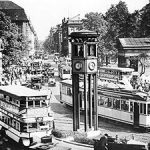 Ohio became a state in 1803. In 1914 the first electric traffic light was invented and installed in Cleveland.
Ohio became a state in 1803. In 1914 the first electric traffic light was invented and installed in Cleveland. New Jersey became the 3rd state in 1787. The world’s first drive-in movie theater was opened in Camden in 1933.
New Jersey became the 3rd state in 1787. The world’s first drive-in movie theater was opened in Camden in 1933.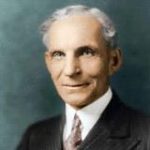
 Michigan became the 26th state in 1837. It is the home of some famous Fords. Henry Ford, car manufacturer, was born in 1863. Gerald Ford, our 38th president, was born in 1913.
Michigan became the 26th state in 1837. It is the home of some famous Fords. Henry Ford, car manufacturer, was born in 1863. Gerald Ford, our 38th president, was born in 1913.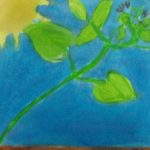
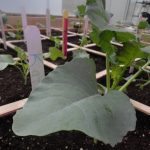 he taught about equivalence. Our broccoli is doing well in the greenhouse and our plants are thriving in the classroom. We wrote haiku poems about our plants and illustrated them. If you’re at the school, come and enjoy them in the hall. Those plants will be coming home Friday. If you’d like them to thrive, they’ll need to be transplanted into a bigger pot for now. As for the greenhouse broccoli, we’re hoping to harvest some as school ends.
he taught about equivalence. Our broccoli is doing well in the greenhouse and our plants are thriving in the classroom. We wrote haiku poems about our plants and illustrated them. If you’re at the school, come and enjoy them in the hall. Those plants will be coming home Friday. If you’d like them to thrive, they’ll need to be transplanted into a bigger pot for now. As for the greenhouse broccoli, we’re hoping to harvest some as school ends.
 The children have been researching, taking notes and writing about their wonders. It seems as though most of the children are feeling pretty confident about what they are doing. They have been drafting and crafting their pieces. They have begun writing with the goal of persuading readers to visit and vacation in their state. They are coming up with the top five reasons you should visit their state and creating bumper stickers as well.
The children have been researching, taking notes and writing about their wonders. It seems as though most of the children are feeling pretty confident about what they are doing. They have been drafting and crafting their pieces. They have begun writing with the goal of persuading readers to visit and vacation in their state. They are coming up with the top five reasons you should visit their state and creating bumper stickers as well.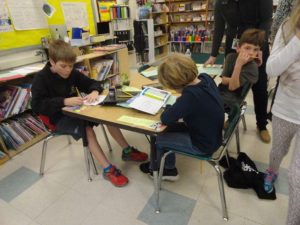 Thank you for all your support for this project. Already as I type this on Thursday evening, 10 of the students have received their building permits and I see evidence in folders that other students have been planning as well. On Thursday the students brought home the finished artwork representing 3 of their required 5 State Wonders. These pieces are for their floats so that only two Wonder representations need to be created at home. Some of the children have found 7 Wonders. All seven do not have to be represented on the float – but certainly can be if it works out. If the art pieces were not finished, they are still here at school and will be sent home as they are completed.
Thank you for all your support for this project. Already as I type this on Thursday evening, 10 of the students have received their building permits and I see evidence in folders that other students have been planning as well. On Thursday the students brought home the finished artwork representing 3 of their required 5 State Wonders. These pieces are for their floats so that only two Wonder representations need to be created at home. Some of the children have found 7 Wonders. All seven do not have to be represented on the float – but certainly can be if it works out. If the art pieces were not finished, they are still here at school and will be sent home as they are completed.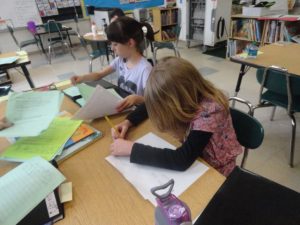 It is not expected that the writing the children are crafting about the Wonders will be on the float. This will be put in the digital poster the children will create and will be on display the evening of the parade. As you are building, if you find the need to make changes in the plan – please do. If I can be of any help, please let me know!
It is not expected that the writing the children are crafting about the Wonders will be on the float. This will be put in the digital poster the children will create and will be on display the evening of the parade. As you are building, if you find the need to make changes in the plan – please do. If I can be of any help, please let me know! Check to see if your child can tell you what the numerator and the denominator of a fraction is and what they stand for. I think all of the children can do that as of this week. We’ve been identifying fractions and comparing fractions. We’ve realized that fractions and division are related. At first problems where we had to figure out how to share amounts of brownies among different numbers of students seemed challenging. We can do that type of problem now.
Check to see if your child can tell you what the numerator and the denominator of a fraction is and what they stand for. I think all of the children can do that as of this week. We’ve been identifying fractions and comparing fractions. We’ve realized that fractions and division are related. At first problems where we had to figure out how to share amounts of brownies among different numbers of students seemed challenging. We can do that type of problem now.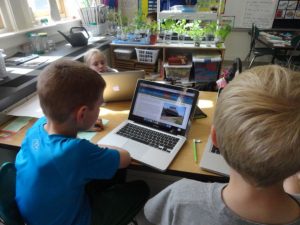 Most days there are 4 problems for the children to solve. Their challenge is to choose problems that make them stop and think. Our hope is that it will be a little hard, because then we know they are learning something new. This year’s class has challenged themself even further. Most of them are trying to complete all 4 of the problems everyday. At the beginning of the year that was something very few could do and now it is something most of them can do. There is a real sense of pride and accomplishment. Here’s a student quote from Wednesday, “Remember when I couldn’t even finish one problem in the math time? I’m already on my third.” Effort, risk-taking and a bit of struggle pay off with learning. It is truly exciting to see what they can do now as mathematicians.
Most days there are 4 problems for the children to solve. Their challenge is to choose problems that make them stop and think. Our hope is that it will be a little hard, because then we know they are learning something new. This year’s class has challenged themself even further. Most of them are trying to complete all 4 of the problems everyday. At the beginning of the year that was something very few could do and now it is something most of them can do. There is a real sense of pride and accomplishment. Here’s a student quote from Wednesday, “Remember when I couldn’t even finish one problem in the math time? I’m already on my third.” Effort, risk-taking and a bit of struggle pay off with learning. It is truly exciting to see what they can do now as mathematicians. We are nearing the end of Wonder. The class is really involved in this book and anxious to read more and more.
We are nearing the end of Wonder. The class is really involved in this book and anxious to read more and more. the testing tools and the online format. If your child is feeling worried or stressed, please assure him or her that putting forth best effort is all we ask. They’ll know many things, but they won’t know them all. That’s okay! We’ll get through it and then celebrate with The Parade of the States.
the testing tools and the online format. If your child is feeling worried or stressed, please assure him or her that putting forth best effort is all we ask. They’ll know many things, but they won’t know them all. That’s okay! We’ll get through it and then celebrate with The Parade of the States.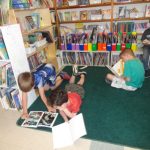 the singing of the 50 States that Rhyme. In the past we’ve always had 2 music blocks and the children had ample time to learn, practice and play about a dozen songs. With only one music block this year that cannot happen, but Mrs. Oliver is hoping the children will be able to learn 6, and possibly 8 songs. It would be a great help if the children had some practice time over vacation. Mrs. Oliver put some tips in the Friday folders to help you help them. The children work hard all year in music to learn how to read and write music and the final accomplishment is for all to be able to play together and perform. Thank you for your help with this.
the singing of the 50 States that Rhyme. In the past we’ve always had 2 music blocks and the children had ample time to learn, practice and play about a dozen songs. With only one music block this year that cannot happen, but Mrs. Oliver is hoping the children will be able to learn 6, and possibly 8 songs. It would be a great help if the children had some practice time over vacation. Mrs. Oliver put some tips in the Friday folders to help you help them. The children work hard all year in music to learn how to read and write music and the final accomplishment is for all to be able to play together and perform. Thank you for your help with this.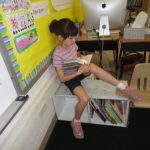 Congratulations to the 1- 4th graders who performed in the Talent Show on Wednesday evening. Special congratulations to our classmates, Rachael Dionne, who sang and Julie Allen, who danced. It was wonderful to see.
Congratulations to the 1- 4th graders who performed in the Talent Show on Wednesday evening. Special congratulations to our classmates, Rachael Dionne, who sang and Julie Allen, who danced. It was wonderful to see.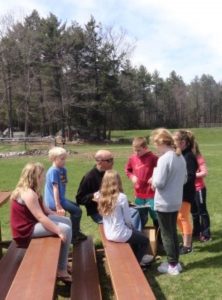
 We’ve been writing story problems to go with division facts. Here are some of the ones our class wrote yesterday. Can you name the equations?
We’ve been writing story problems to go with division facts. Here are some of the ones our class wrote yesterday. Can you name the equations?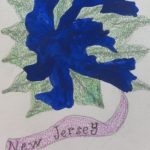 This week’s post is illustrated by Rachael, our class photographer.
This week’s post is illustrated by Rachael, our class photographer.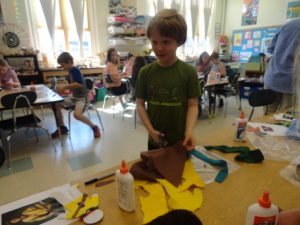 Last week we completed an informational writing assessment. Through this, we discovered that we need to strengthen and lengthen our writing. We need to elaborate and add detail and description. This week we’ve continued exploring what that means.
Last week we completed an informational writing assessment. Through this, we discovered that we need to strengthen and lengthen our writing. We need to elaborate and add detail and description. This week we’ve continued exploring what that means.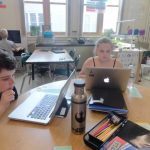 We reread A Poem In Your Pocket by Margaret McNamara to discover how the main character, Elinor changes throughout the book. We collected words to describe her. In fact we collected 38 descriptors, and yet none of them were written directly in the text. Powerful writing uses strong verbs and we are learning to use them in our writing as well.
We reread A Poem In Your Pocket by Margaret McNamara to discover how the main character, Elinor changes throughout the book. We collected words to describe her. In fact we collected 38 descriptors, and yet none of them were written directly in the text. Powerful writing uses strong verbs and we are learning to use them in our writing as well. We’ve been reading lots of different poems and exploring collections of poetry this week. Each of the children is looking for different poems to share with the class. This is a genre we haven’t explored much this year and we’re discovering that it is fun. We gave haiku a try, and found it a bit challenging. They are so short and small – we’ll keep exploring. Perhaps we’ll try couplets or diamante as well.
We’ve been reading lots of different poems and exploring collections of poetry this week. Each of the children is looking for different poems to share with the class. This is a genre we haven’t explored much this year and we’re discovering that it is fun. We gave haiku a try, and found it a bit challenging. They are so short and small – we’ll keep exploring. Perhaps we’ll try couplets or diamante as well.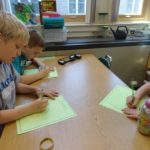
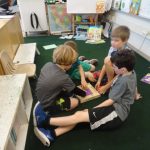 The children have continued discovering Wonders. Many of them have selected all five of their wonders at this point. We’ve been asking the children to tell us about their wonders to help them find ways strengthen their descriptions. For example, if they chose the violet or the cream pie from their state’s symbol list because they it was beautiful or funny, we are hoping to help them dig deeper to find how it came to represent their state. That’s hard work because there are only a few sentences scattered here and there throughout different resources. The children are learning to be research detectives and to stop and think about what the words mean beyond what they say.
The children have continued discovering Wonders. Many of them have selected all five of their wonders at this point. We’ve been asking the children to tell us about their wonders to help them find ways strengthen their descriptions. For example, if they chose the violet or the cream pie from their state’s symbol list because they it was beautiful or funny, we are hoping to help them dig deeper to find how it came to represent their state. That’s hard work because there are only a few sentences scattered here and there throughout different resources. The children are learning to be research detectives and to stop and think about what the words mean beyond what they say. This year for the writing portion of the project we are going to have each child create a Glogster. This is a multimedia poster. They’ll be able to include writing, art, audio, video and images on their poster as they endeavor to persuade us to travel to their state – the most interesting one in our country. We’ve not used this before and are looking forward to helping the children present and share their work in this way.
This year for the writing portion of the project we are going to have each child create a Glogster. This is a multimedia poster. They’ll be able to include writing, art, audio, video and images on their poster as they endeavor to persuade us to travel to their state – the most interesting one in our country. We’ve not used this before and are looking forward to helping the children present and share their work in this way.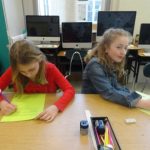 Most of us have discovered that our broccoli is growing rapidly out in the greenhouse. We’ve been measuring and realizing that the plants can grow about a half and inch in a couple days. We’ve also learned that the greenhouse is a hot place!
Most of us have discovered that our broccoli is growing rapidly out in the greenhouse. We’ve been measuring and realizing that the plants can grow about a half and inch in a couple days. We’ve also learned that the greenhouse is a hot place!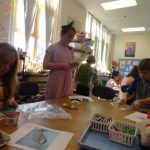 honesty, fairness, strength and wisdom as important behaviors people should have. We’re trying to discover what each of those words mean and how it looks when we are acting in those ways. It’s leading to some interesting conversations. Check in with your child to see how they are thinking now at the beginning of the discussion. And check in again with them next week to see if they have any goals for themselves and how they want to be with others.
honesty, fairness, strength and wisdom as important behaviors people should have. We’re trying to discover what each of those words mean and how it looks when we are acting in those ways. It’s leading to some interesting conversations. Check in with your child to see how they are thinking now at the beginning of the discussion. And check in again with them next week to see if they have any goals for themselves and how they want to be with others.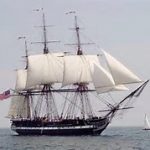 The Pilgrims settled in Plymouth in 1620. Later
The Pilgrims settled in Plymouth in 1620. Later 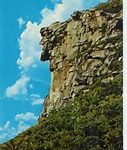 2003 the Old Man In the Mountain, a symbol of the state, fell. How long has New Hampshire been a state? How long has it been since the Old Man disappeared?
2003 the Old Man In the Mountain, a symbol of the state, fell. How long has New Hampshire been a state? How long has it been since the Old Man disappeared? Maine
Maine n 1636 people moved from Plymouth, MA to
n 1636 people moved from Plymouth, MA to 
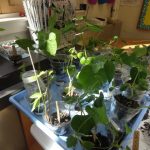 In March we began some planting experiments. We planted four different types of seeds in two different growing situations. We wondered which would grow first – covered or uncovered? We wonder what type of seed would grow first – big or little, bumpy or smooth?
In March we began some planting experiments. We planted four different types of seeds in two different growing situations. We wondered which would grow first – covered or uncovered? We wonder what type of seed would grow first – big or little, bumpy or smooth?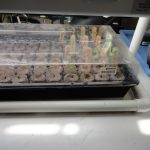


 We also planted some broccoli seeds. When they were big enough we put them in the greenhouse. They are changing quickly.
We also planted some broccoli seeds. When they were big enough we put them in the greenhouse. They are changing quickly. This post is illustrated with photographs taken by Gabby, this week’s class photographer.
This post is illustrated with photographs taken by Gabby, this week’s class photographer. We’ve continued on with our state research. We’ve discovered that books are some of our best resources. If we look at just the pictures in the four books we have about our state, we can infer what is important there by noticing what images are repeated. Almost everyone realizes the need of reading sections and then taking notes about what is important. We’ve got fewer students copying what they read and that’s a great thing.
We’ve continued on with our state research. We’ve discovered that books are some of our best resources. If we look at just the pictures in the four books we have about our state, we can infer what is important there by noticing what images are repeated. Almost everyone realizes the need of reading sections and then taking notes about what is important. We’ve got fewer students copying what they read and that’s a great thing.


 This week we began math with games. These are for fact practice. Some of the kids were having very little time with them when it was the last part of the hour so we switched it up. It’s fun and helpful at the same time.
This week we began math with games. These are for fact practice. Some of the kids were having very little time with them when it was the last part of the hour so we switched it up. It’s fun and helpful at the same time. In addition to our state research work, we completed an informational writing assessment. In the first few weeks of school the children wrote an informational piece to be scored on a rubric. And now, we completed another to use as a comparison. Over the course of the next two weeks, I’ll conference with the children showing them their pieces of writing, looking at the goals set in November and helping set up a final goal for the year.
In addition to our state research work, we completed an informational writing assessment. In the first few weeks of school the children wrote an informational piece to be scored on a rubric. And now, we completed another to use as a comparison. Over the course of the next two weeks, I’ll conference with the children showing them their pieces of writing, looking at the goals set in November and helping set up a final goal for the year. We continue to read poems about seeds, planting and growing together. We alternate between sharing picture books, both fiction and nonfiction, about plants and about the United States each day.
We continue to read poems about seeds, planting and growing together. We alternate between sharing picture books, both fiction and nonfiction, about plants and about the United States each day. Our challenge as a class is to stay focused. We are working on self-management. Our class talks and chats and gabs all the time. It happens when were at tables doing seatwork. It happens during instruction. It happens ALL the time. It seems that we can’t resist responding a blurted comment. We are all trying to monitor ourselves and find a way that will lead us on to greater success. On Wednesday we managed to write nearly silently for forty minutes. The results of that focused time were remarkable. We are looking forward to more of this.
Our challenge as a class is to stay focused. We are working on self-management. Our class talks and chats and gabs all the time. It happens when were at tables doing seatwork. It happens during instruction. It happens ALL the time. It seems that we can’t resist responding a blurted comment. We are all trying to monitor ourselves and find a way that will lead us on to greater success. On Wednesday we managed to write nearly silently for forty minutes. The results of that focused time were remarkable. We are looking forward to more of this.
 Louisiana became the 18th state in 1812. It is known for its Mardi Gras celebration that has been happening every year since 1838.
Louisiana became the 18th state in 1812. It is known for its Mardi Gras celebration that has been happening every year since 1838.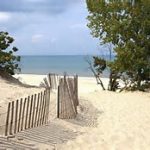 Indiana became the 19th state in 1816. Indiana Dunes National Lakeshore is in northern Indiana on the shores of Lake Michigan. People began the work a preserving this site in 1899. It finally became a national park in 1966.
Indiana became the 19th state in 1816. Indiana Dunes National Lakeshore is in northern Indiana on the shores of Lake Michigan. People began the work a preserving this site in 1899. It finally became a national park in 1966. Florida became the 27th state in 1845. One of its natural wonders is the Everglades. It was preserved in 1947. One of its manmade wonders is Kennedy Space Center on Cape Canaveral. It opened in 1962.
Florida became the 27th state in 1845. One of its natural wonders is the Everglades. It was preserved in 1947. One of its manmade wonders is Kennedy Space Center on Cape Canaveral. It opened in 1962.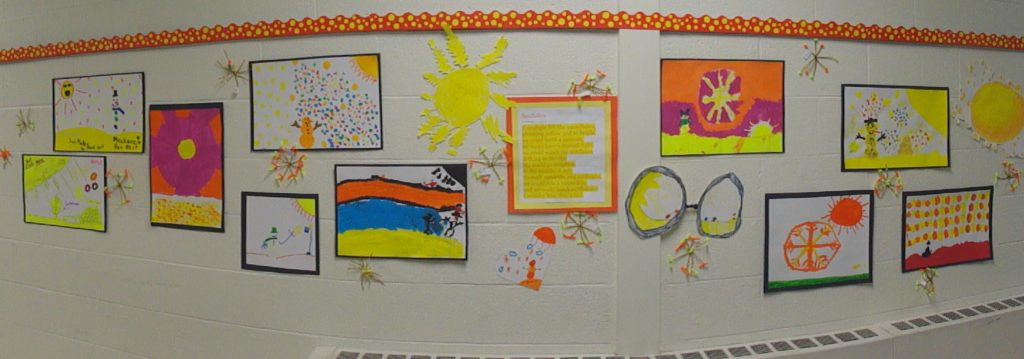 Today we are challenging ourselves to post something new on each of our blogs. We hope you’ll check them out and leave a comment or two. We do love knowing our posts have been read.
Today we are challenging ourselves to post something new on each of our blogs. We hope you’ll check them out and leave a comment or two. We do love knowing our posts have been read. Here’s the Tuesday post for the class blog.
Here’s the Tuesday post for the class blog.